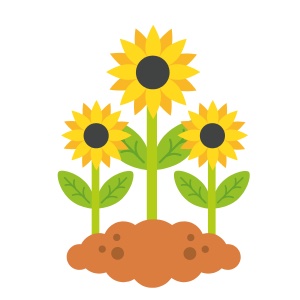Articles
April Showers Bring May Flowers...
April 02, 2024

April showers bring May flowers… lovely; however, most of us need quick and impactful solutions to keeping our lawns and gardens looking sharp whilst demanding minimum time.
Gardening is an excellent skill set and teaching tool. In any form, gardening teaches patience, self-confidence, pride of ownership, responsibility, math and planning skills, and many others. Most importantly, gardening teaches (anyone of all ages) resilience. Inevitably, some plants will thrive and some will become compost. Daily and weekly efforts must be made in order to achieve the final goal.
Valuable skill sets gained through gardening
-
The importance and process of composting
-
Teamwork
-
Problem Solving
-
Respect for nature
-
Health & Wellness skill sets
-
Cause and effect correlations
Successful gardening can be as minimal as one needs. There is no rule that states a lawn or patio must be elaborate. For low-maintenance ideas, enjoy these easy tips.
Tips for low maintenance gardening
-
Begin a watering schedule after the typical final freeze in your area.
-
Embrace a bit of “wildness” within your space
-
Mulch and woodchips will help hold water longer
-
Choose bigger pots with fewer plants
-
Choose low-water plants for shrubbery options
-
Build in hard-boundaries, such as framed beds or walking paths
With these tips, keeping your garden and lawn looking great with little time has never been easier! And, although gardening might not be your preferred forte, passing on the skill set to the younger generation can have profound impacts.
Enjoy the change of seasons and be sure you get outside this spring!
Additional Article Sources
https://www.rhs.org.uk/garden-inspiration/get-gardening/10-ways-to-a-low-maintenance-garden
https://www.rhs.org.uk/garden-design/low-maintenance-gardening
https://www.forbes.com/home-improvement/outdoor/low-maintenance-landscaping-ideas/
https://www.gardenersworld.com/how-to/grow-plants/gardening-for-beginners-10-tips/
https://www.almanac.com/vegetable-gardening-for-beginners
https://www.betterhealth.vic.gov.au/health/healthyliving/gardening-for-children
https://www.montessorinature.com/importance-benefits-gardening-children-toddlers-preschoolers/
Want to Learn More?
https://growinginthegarden.com/gardening-for-beginners-how-to-start-a-garden-in-8-simple-steps/
https://kidsgardening.org/resources/gardening-basics-safe-gardening-guidelines/
